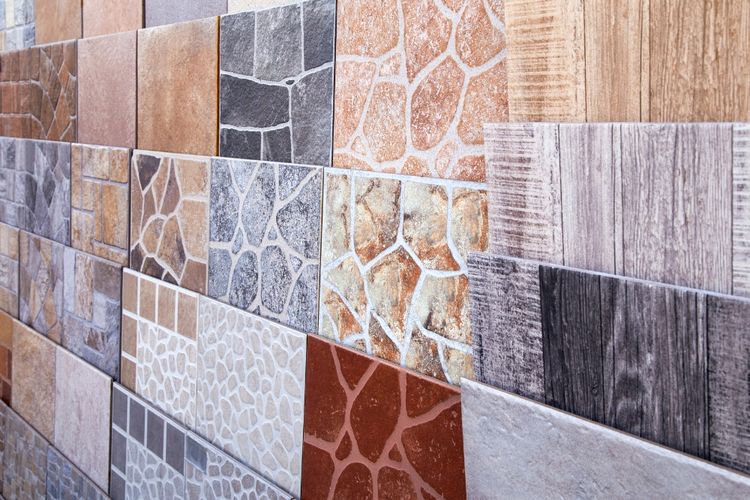The Resurgence of Terrazzo: A Modern Twist on Classic Flooring
Terrazzo, the speckled flooring that once graced mid-century buildings, is making a triumphant return to contemporary home design. This resurgence isn't just a nostalgic nod to the past; it's a reimagining of a versatile material that speaks to current trends in sustainability, customization, and artistic expression. As homeowners seek unique ways to infuse personality into their spaces, terrazzo is emerging as a star player in flooring, countertops, and even decorative objects.

Fast forward to the 20th century, and terrazzo became a hallmark of Art Deco and modernist architecture. Its popularity soared in the 1950s and 60s, adorning everything from school hallways to government buildings. The advent of synthetic resins in the 1970s allowed for thinner, more flexible applications, but as minimalism took hold, terrazzo fell out of favor.
Today’s terrazzo renaissance is driven by advances in materials and installation techniques. Modern terrazzo can incorporate a wider range of aggregates, including recycled glass, metal, and even plastic, offering unprecedented design flexibility. Epoxy-based terrazzo systems have made installation faster and more cost-effective, opening up possibilities for residential use.
The Aesthetic Appeal of Controlled Chaos
What sets terrazzo apart in today’s design landscape is its ability to embody both order and spontaneity. The random distribution of aggregate within a unified matrix creates a visually engaging surface that can be both bold and subtle. This duality allows terrazzo to complement a variety of design styles, from sleek modernism to eclectic maximalism.
Color possibilities are virtually limitless, with designers able to custom-mix matrix hues and select aggregates to create bespoke palettes. This customization potential has made terrazzo a favorite among homeowners looking to express their individuality through their living spaces. Whether it’s a vibrant, multi-colored floor that serves as the focal point of a room or a subdued, monochromatic countertop that adds subtle texture, terrazzo offers unparalleled versatility.
Beyond Flooring: Terrazzo’s Expanding Role in Home Design
While floors remain terrazzo’s primary domain, innovative designers and homeowners are finding new applications for this versatile material. Countertops and backsplashes in kitchens and bathrooms are increasingly featuring terrazzo, offering a durable and low-maintenance alternative to natural stone or tile.
Furniture designers are also embracing terrazzo, incorporating it into table tops, lamp bases, and even entire chairs. The material’s ability to be molded into various shapes allows for creative freedom in furniture design, resulting in pieces that are both functional and sculptural.
Decorative objects and accessories made from terrazzo are gaining popularity as well. From planters and bookends to coasters and serving trays, these items allow homeowners to incorporate the terrazzo trend without committing to larger installations.
Sustainability: A Key Driver of Terrazzo’s Comeback
In an era of increasing environmental consciousness, terrazzo’s eco-friendly qualities are a significant factor in its resurgence. The material’s longevity is a major selling point; properly maintained terrazzo floors can last for decades, reducing the need for replacement and minimizing waste.
Moreover, terrazzo’s composition can be tailored to incorporate recycled materials. Glass from bottles, mirrors, and windows can be crushed and used as aggregate, giving new life to materials that might otherwise end up in landfills. Some manufacturers are even experimenting with using recycled plastic as a binding agent, further reducing the environmental impact.
The ability to repair and refinish terrazzo surfaces also contributes to its sustainability. Unlike many flooring options that need to be entirely replaced when damaged, terrazzo can often be patched or repolished, extending its lifespan and reducing waste.
Challenges and Considerations for Homeowners
While terrazzo offers numerous benefits, it’s not without its challenges. Installation can be complex and time-consuming, often requiring specialized professionals. This can translate to higher upfront costs compared to some other flooring options.
The weight of traditional cement-based terrazzo can also be a concern, particularly in older homes or multi-story buildings. However, newer epoxy-based systems are significantly lighter, making terrazzo more accessible for a wider range of properties.
Maintenance, while generally low, does require some specific care. Regular sealing is necessary to protect the surface from stains, and certain cleaning products should be avoided to prevent damage to the finish.
The Future of Terrazzo in Home Design
As terrazzo continues to evolve, we can expect to see even more innovative applications and techniques. Digital design tools are allowing for increasingly intricate patterns and layouts, pushing the boundaries of what’s possible with the material.
Advancements in synthetic binders may lead to even more sustainable options, potentially incorporating biodegradable materials or improving the recyclability of terrazzo installations at the end of their life cycle.
The integration of terrazzo with other design elements is also likely to expand. We may see more hybrid designs that combine terrazzo with wood, metal, or other materials, creating unique transitional spaces and blurring the lines between different surfaces in the home.
As homeowners continue to seek out distinctive, sustainable, and customizable design solutions, terrazzo’s star is likely to keep rising. This ancient material, reborn for the modern era, offers a perfect blend of durability, beauty, and creative potential – a true testament to the cyclical nature of design trends and the enduring appeal of artisanal craftsmanship.





